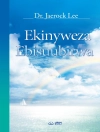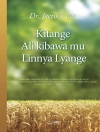‘Give thanks to YHWH, for he is good, for his covenant faithfulness endures for ever’ (Ps. 136:1; a.t.)
There are now numerous models that seek to explain how the biblical covenants relate to one another. In an attempt to evaluate these models, James Hely Hutchinson mines the rich seams of the book of Psalms.
After covering the key data on covenant relationships in Books 1-3 of the psalter, Hely Hutchinson considers the perplexity expressed in the pivotal Psalm 89: in the face of the exile, the promises to David appear to be null and void. The building blocks of the response lie with the first five books of the Bible, and chiefly with the inviolable character of the promises to Abraham (Book 4 of the psalter). However, if the Abrahamic covenant is to reach fulfilment, the problem of sin must be dealt with once and for all, and a glorious new-covenant regime must be established in which a host of covenants converge in their fulfilment. Central to this regime, which lies beyond the exile, is the eternal rule of David’s superior, righteous seed and son who is also a perpetual priest and a suffering servant (Book 5).
Identifying new-covenant newness as ‘eschatological satisfaction (fulfilment)’ and ‘transcendent inauguration’, Hely Hutchinson tackles a range of matters that contribute to our understanding of the contours of redemptive history. The overall aim is to enhance readers’ grasp of God’s breath-taking salvation plan, ability to handle Scripture aright and worship of the Master.
Jadual kandungan
1 This study’s viability and method 1Problem 1: a single book for a whole-of-Scripture debate? 1
Problem 2: an Old Testament book for a new-covenant debate? 2
Problem 3: a recent consensus in Psalms scholarship? 4
The key line of attack 6
The plan of this book 6
Three presuppositions 7
Primacy of the Masoretic Text 7
Post-exilic dating for the Psalter 7
Placement in the Writings 8
2 The covenant-relationships spectrum 9
Model 1: Westminster covenantalism / classical Presbyterianism 10
Model 2: Reformed Baptist covenant theology 14
Model 3: 1689 federalism 15
Model 4: progressive covenantalism 17
Model 5: new covenant theology 19
Model 6: progressive dispensationalism 20
Model 7: classical dispensationalism 21
Summary of issues – and a glimpse of the stakes 23
3 Scene-setting for the psalmist’s perplexity (Psalms 1 – 89) 25
Introduction 25
A new-covenant agenda for the Psalter set by Psalm 2 26
1 Referent in historical context difficult to determine 27
2 Davidic-covenant promises surpassed 28
3 yhwh’s role shared and rank equalled 28
4 Ambiguity between yhwh and his son in evidence 29
5 Holiness of the king underscored 30
6 New covenant implied by the democratization of blessing and the Isaiah 55 background 31
7 New covenant implied by the blessing for the nations 32
8 New David of Micah 5 suggested 33
9 Davidic king contrasted with David of Psalm 3 33
Interim conclusion: Davidic covenant encompassed and transcended by the new covenant 34
New-covenant typology incorporated in the Davidic covenant (Psalms 18; 20 – 21) 36
Fulfilment of the Davidic covenant entailed by fulfilment
of the new covenant (Psalms 45 and 72) 39
Fulfilment of the Abrahamic covenant entailed by fulfilment
of the new covenant (Psalm 72:17b) 42
Need for repentance and mercy highlighted by the
conditionality of the Sinaitic covenant (Psalms 50 – 51) 45
An unconditional covenant broken by God himself (Psalm 89)? 47
The Messiah of the new covenant set forth within the
framework of the Davidic covenant (Psalm 89) 51
Sinaitic conditionality flagged elsewhere in book 3 (Psalms 78 and 81) 53
New-covenant fulfilment as framework for fulfilment of the Abrahamic covenant (Psalms 84 – 87) 55
Summary 57
4 The building blocks of the answer in book 4 61
Introduction 61
Exile alluded to in Psalm 106 61
Mosaic covenant not invoked in ‘Mosaic’ response to the crisis of the exile 64
Abrahamic covenant as the basis for the exiles’ prayer (Psalm 106:45-47) 65
1 Abrahamic covenant evoked by virtue of Pentateuchal allusions in the psalm 66
2 Abrahamic covenant presupposed by virtue of the links with Psalm 105 70
3 Abrahamic covenant alluded to in the parallel context of Psalm 90 71
4 Abrahamic covenant on view in Pentateuchal texts that cohere with the theology of Psalm 106 72
Davidic-covenant solution intimately connected to Abrahamic-covenant solution 75
Abrahamic solution to be applied to the exile (Psalms 89 – 90) 76
Adamic problem exposed (Psalm 90:3-11) 77
Conditional dimension of the Davidic covenant implicitly reaffirmed (Psalm 90) 79
Remedy for the exile a consequence of the remedy for Adamic sin (Psalm 90:12-17) 79
Noahic covenant as an indispensable part of the solution (Psalm 104) 80
Abrahamic covenant per se as insufficient solution (Psalms 105 – 106) 84
‘Pedagogy of failure’ as anticipatory of superior mediation (Psalm 106) 86
Levitical covenant associated with the Davidic covenant (Psalm 106:30-31) 87
Typological structures recapitulated in the new-covenant solution (Psalms 93 – 100) 92
Davidic-covenant solution connected to the new-covenant solution (Psalms 93 – 100 with Psalm 89) 97
New-covenant people drawn from all nations (Abrahamic covenant), on the basis of conversion, and not including all Israelites (Psalms 93 – 100) 99
Sinaitic-/Davidic-covenant conditions satisfied by the eschatological king (Psalm 101) 102
New-covenant (and Abrahamic-covenant) fulfilment enabled by a suffering servant (Psalm 102) 104
Convergence of Abrahamic, Davidic and new covenants in providing the solution to the Adamic problem (Psalm 103) 107
Summary 109
5 The outworking of the answer in book 5 113
Introduction 113
Convergence of Abrahamic and new covenants in their fulfilment (Psalm 107:1-3) 113
‘Sons of Adam’ and ‘all nations’ included in the new exodus (Psalm 107) 115
New-covenant fulfilment not yet experienced in the post-exilic period (Psalm 107:43) 119
Davidic covenant indirectly reaffirmed by virtue of intertextuality (Psalm 107:43) 120
Convergence of Abrahamic-, Davidic- and new-covenant fulfilment confirmed (Psalm 118 and immediately preceding context) 121
New covenant fulfilled (Psalm 118) 121
Abrahamic covenant fulfilled (Psalms 115 – 118) 122
Davidic covenant fulfilled (Psalm 118) 123
Convergence of Abrahamic-, Davidic- and new-covenant fulfilment confirmed (Psalm 136 and immediately preceding context) 125
New covenant fulfilled (especially Psalm 136) 125
Abrahamic covenant fulfilled (Psalm 135) 127
Sinaitic conditionality observed (Psalm 133) 128
New covenant fulfilled in stages (Psalms 119 – 136) 129
Davidic covenant fulfilled, with conditionality satisfied (Psalm 132) 130
David recapitulated in a superior antitype (Psalms 108 – 110; 138 – 145) 134
Victory, judgment and suffering intensified 135
King combined with righteous suffering servant 137
Levitical covenant fulfilled by a superior priesthood – combined with kingship (Psalm 110) 139
Priesthood democratized (Psalms 118; 134 – 135) 142
Blessings democratized (Psalm 144) 143
yhwh’s ‘Abrahamic’ ḥesed reiterated in the last ‘David’ psalm (Psalm 145) 145
Convergence of Noahic-, Abrahamic-, Davidic- and new-covenant fulfilment confirmed (Psalms 146 – 150) 146
Summary 149
6 The law and the new-covenant believer’s ethical life 153
Mosaic law (or a part of it) applied to the new-covenant believer? 153
Thesis: permanence of Mosaic (moral) law (Psalm 111:9; Jeremiah 31:33; Psalm 119) 154
In favour: Mosaic law as implicitly subdivisible, with an appeal to the heart (Psalms 40; 50 – 51) 155
Against: ‘qualified newness’ suggested by the Psalter 156
1 Recapitulation expected 156
2 Abrahamic covenant referred to in Psalm 111:9 156
3 Broad range of notions encompassed by ‘law’ (and synonyms) in Psalm 119 157
4 Sabbath not featured in Psalm 119, but wisdom motifs present 159
5 Newness underlined by virtue of Isaianic background 161
Conclusion: simple renewal of Sinaitic legislation not envisaged, though some continuity 164
7 Summary and conclusions 165
The answer to the psalmist’s perplexity 165
The message of the Psalter from a covenant-relationships perspective 165
In summary: the covenant-relationships answer to the psalmist’s perplexity 168
New-covenant newness as set forth in the Psalter 168
Twenty-eight statements 168
A diagram showing aspects of the interconnectedness of the covenants 171
Two key summarizing phrases 172
Evaluation of the seven models 172
Covenant partner and beneficiary 173
Typology and the ‘transcendence’ implied by the new covenant 174
Combination of kingship and priesthood 175
Discontinuity with the Sinaitic covenant and distinctions between covenants 175
Quality of newness 177
Temporality of newness 177
Climax, timing and mode of fulfilment 177
New-covenant integration 177
Convergence in fulfilment 178
Tension 178
Law 178
Concluding comments regarding the spectrum 179
Covenant relationships elsewhere in Scripture 180
Other biblical books or corpora? 180
The perspective of the New Testament 180
Implications 184
At the level of our appreciation of the gospel 184
At a practical-theological level 185
At a practical level 185
Closing doxology 187
Appendix 1: Hierarchy of key indicators of Psalter shape/shaping 189
Appendix 2: Second example of ambiguity between yhwh and his king in a prophecy concerning the new covenant 191
Appendix 3: Second possible explanation of the relationship between Psalm 106 and 1 Chronicles 16 193
Appendix 4: Meaning of ‘Of David’ after Psalm 72:20 196
Appendix 5: Referent of the first-person plural in Psalm 117:2 198
Bibliography 201
Index of authors 223
Index of biblical covenants 227
Index of Scripture references 230








![perlindungan daripada Brian Schrag & Julisa Rowe: Community Arts for God's Purposes [Chinese] 貼近神心意的社群藝術 perlindungan daripada Brian Schrag & Julisa Rowe: Community Arts for God's Purposes [Chinese] 貼近神心意的社群藝術](https://static.worldofdigitals.com/thumb_webp/740/9781645083740.webp)



